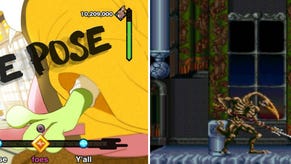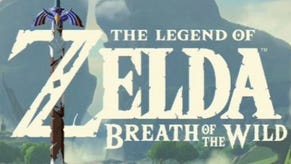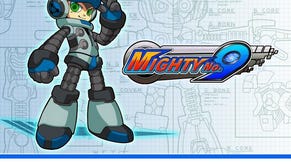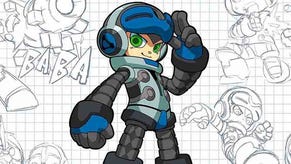The Whys & Wherefores of Mighty No. 9
Comcept's outspoken boss Keiji Inafune on delays, partnerships, and knowing when enough's enough.
This article first appeared on USgamer, a partner publication of VG247. Some content, such as this article, has been migrated to VG247 for posterity after USgamer's closure - but it has not been edited or further vetted by the VG247 team.
The Mighty No. 9 project has had some wild ups and downs since it was first announced two years ago. From its rollicking, record-setting crowdfunding campaign in 2013 to its recent delay into 2016, the game seems to have attracted as much criticism as enthusiasm. I met with Comcept president Keiji Inafune this year at Tokyo Game Show to discuss the ups and downs of the project.
USgamer: What were your thoughts on the TGS show floor this year?
Inafune: I didn’t actually play anything, I just took a walk around the show floor. A lot of small booths out there—it looked like it had a bit more of an indie feeling to it compared to the previous years of TGS.
USG: I definitely feel like the show is evolving from the early, big major publisher booths that it used to be to a lot of mobile publishers, especially.
Inafune: Before, all the big publishers had the flashy, huge, amazing booths, but these days it’s actually the mobile companies that have those kind of presentations. Big publishers have been kind of quiet, toned down a little bit, so it’s kind of an interesting sight to see.
USG: Yeah, there was that one booth—I can’t remember the name of the company…
Inafune: Cygames.

USG: Cygames, yes, I haven’t been able to check the booth out, but everyone was talking about how they have a giant airship.
Inafune’s translator: They have a giant airship, and they also have an actual building.
Inafune: So this is my thought, and a little bit of a guess, but I know for a fact that the CEO of Cygames actually wanted to make console games when he was younger. He didn’t do too well, and for business reasons, he decided to get into into mobile gaming and had a huge hit. So I think the way he’s making the booth look almost like a traditional big publisher's type of booth... that might be the reason behind it, but that’s just [my] guess.
USG: Do you think at some point you’ll have a TGS booth, or is Comcept okay being just sort of a presence there, lurking in the background?
Inafune: Once we establish ourselves as an IP holder, getting big enough to be able to hold a booth in this kind of event… when that happens, we actually have to actually think carefully about which event to do that at. Just because we’re a Japanese company or Japanese doesn’t mean that we have to do TGS; it could be E3 or it could be GamesCom, or other events. It really depends on the title and our situation at that time.
USG: What are the big projects that are taking up your time right now? At least the ones you can talk about.
Inafune: So, there are three titles, there’s Mighty No. 9. We’re pretty much finishing up the game, and we are about to go into the actual promotion phase of the project, even though it’s delayed, but it’s not too far away from here. So that’s the number-one priority in our list.
Then there’s ReCore, which we announced at E3 this year. Because the reaction from fans was pretty good, the project actually has the potential to become a bigger one than what we had originally planned for, so that’s definitely an exciting project for us to look forward.
Last but not least, there’s the Red Ash project, even though the Kickstarter was a failure. But we did get the company Fuse to back us up with the project, at least to a certain point. So we are talking with Fuse and within ourselves, “How can we evolve this project to our end goal?” Those are the three major titles that we’re working on right now.
USG: Let’s talk about Mighty No. 9 first. You say it’s about to go into major promotion; what kind of promotional plans are you looking at for Mighty No. 9? I know you’re working with Deep Silver, at least in the U.S., on that.
Inafune: So the first step for promotion phase, we have to actually decide the release date. [Note: In the time since this interview was conducted, Mighty No. 9 has been locked down to Feb. 9.] Even though we don’t have an exact date yet, we have narrowed it down to a certain point—first quarter 2016—and that’s not changing at this point. Based on that, we are planning towards that date and Deep Silver is working on their side and we’re working on our side, and then we’ll bring out the ideas together and see which direction we can take for Mighty No. 9 PR, or maybe both directions.
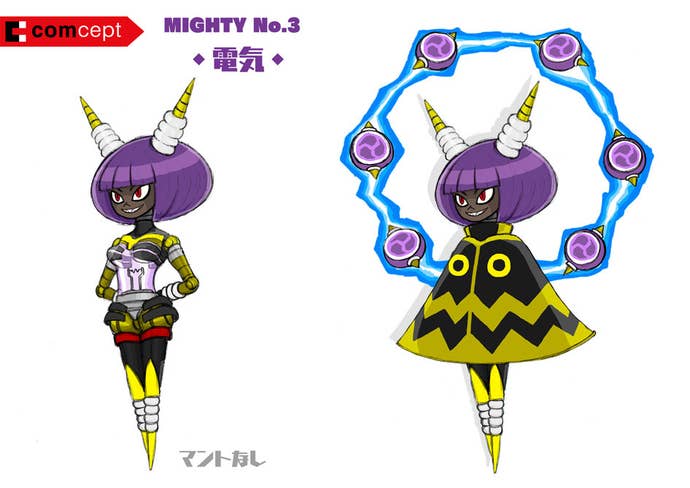
USG: The delay on Mighty No. 9, what happened there? I've read that the game was pretty much done, it’s just there’s a multiplayer bug or something?
Inafune: What you heard is pretty much true. Because of the multiplayer bugs, if we had submitted the game builds to the first-party platform holders with those bugs, we would have been rejected for sure. So based on that, we couldn't complete [console publishing] certification for the project. However, because we were actually aiming towards [mid-September] for the release, the game was getting really close to being finished. We are actually doing the certification process right now, so there are a couple of console versions already in the platform holders’ hands. They’re reviewing the builds and all of that stuff, so it’s definitely progressing, but because the game is on so many different types of hardware and we have to complete so many builds for so many regions, the process takes up a lot of time.
USG: I think a lot of people were actually surprised to hear that there was even a multiplayer component to the game, because they were really just thinking about Mighty No. 9 as a single-player game. Was there any consideration given to separating the multiplayer out and publishing the campaign on time, and then rolling out the online component as DLC? Kind of like Metal Gear Solid V, which debuted as a campaign and had Metal Gear Online launch a month later...
Inafune: When the first possibility of the delay came up, there was definitely that consideration of [launching] with single-player only, and then patching in the multiplayer later on. We actually brought this up to Deep Silver, the publisher, and from their point of view, a business side point of view, this way of marketing the game is not going to end up well, business-wise.
[Inafune's translator added the following information: When you release a game with single-player content only, you can only label that game as a single-player game when you do the certification to the first-party, the platform holders. So you cannot write "single-player/multiplayer" on the box or any other way to promote it, so it’s only a single-player game. When that happens, the price will drop—we cannot price the game as a the single-player and multiplayer game, we can only price it as a single-player game.]
So from that standpoint, Deep Silver’s decision was to wait and get everything else together, everything that we’ve promised to backers and to the fans, and to start the sales from that point. That’s the result of teaming up with a publisher to make the project bigger. If we were still just an independent developer and self-publishing this game, that option would definitely have been something we would have considered when we were struggling [with the bugs].
USG: When you launched the Kickstarter, you talked about being independent and not having to worry about publishers. Has it been frustrating to kind of have to make these compromises, working with Deep Silver?
Inafune: If our company was a bit bigger and had more of the human resource to work on this project, self-publishing could be the way to go. But because of the potential we see in this game, it was much, much bigger than we originally thought, so we decided to make this property something bigger than we originally thought. That’s why we talked with Deep Silver with the publishing deal. There’s good and bad to it. The good is that we have so many people helping us, team members supporting us—but that’s also the reason we have to focus on the business side, because there are so many people, so many parties involved at this game now.
From our standpoint, we want to focus on the backers and the creative process of making the game. From Deep Silver’s side, this is such a huge project, even for them, they have to be careful with the business side. You know, both sides keeping their area of expertise to maximum. Sometimes there are disagreements between those two sides, but I think at the end, either way, they’re also working for the game, to make the project something bigger and better.
USG: On that note, once you get the game out and in peoples’ hands, are you going to want to take a break and step back to recover from the project, or are you looking to expand the franchise while the iron is hot?
[Inafune’s translator: I want to take that step back. (laughs)]
Inafune: There’s no break for me, and the reason I say that is because I have always been working this way, ever since I was at Capcom. I don’t want to finish a game and then start sitting and thinking about the next one. I’d rather have the team thinking about the next game while they are finishing up the current project. For this project, Comcept’s team is the core creative team, so our work for Mighty No. 9, the original game, is pretty much done, because it’s in the final phase of the production and we’re just pushing out the game. So we already have a team working on something coming up next for the Mighty No. 9 series. Could be a sequel, it could be a spin-off, or something, but they’re just brainstorming right now what we can do for this title. So, to answer your question, no, there’s no break—I always want to think about the next one, and just keep moving as far as I can go.

USG: I assume you’re thinking beyond just expanding into more video games; like with the Red Ash Kickstarter, there was the parallel Kickstarter for animation.
Inafune: So rather than just making a game, per se, we definitely want to make a franchise in that sense. Mighty No. 9, I think, has the potential to become something bigger and wider for the audiences, not just for the game audiences, but also for films or animation. We already have announced two [side] projects for Mighty No. 9. As for what’s coming up next, we’ll still keep this thinking process going. And [that's our approach] with every project—we’ll start thinking about the animation and other media at the same time as we plan the game.
USG: Now that Nintendo has opened the gates for third-party Amiibo, are you looking to expand in that direction for your Nintendo fans?
Inafune: That’s definitely an option for us, and if we have the opportunity to do it, then we’ll definitely take the chance. And also, we know for a fact a lot of our backers are Nintendo fans, because we ran a platform survey [for Mighty No. 9], and we see how many people are choosing Nintendo hardware. So it's definitely something we have to look into. ?
USG: When you look to expand into a franchise like you’re talking about, do you find it difficult to know exactly how far to go, how much to release, how big to go and when to pull back? I ask because the Mega Man Legacy Collection recently came out in America, and I've seen a lot of people who've discovered Mega Mans 5 and 6 for the first time saying, “Oh, these games are really good!” They had burned out on Mega Man because there were so many games coming out in sequence that they just said, “Oh, it’s another Mega Man,” and didn’t really give those games a fair chance at the time. So there’s a balance to be struck, clearly, but where do you find it?
Inafune: I think the simplest answer is to do market research and get feedback from the fans. For example, in the case of the Mega Man series, when Mega Man 4 came out, that’s when we started working on Mega Man X, and the reason for this is because... it's not because we simply wanted to expand the franchise. Some fans wanted the original Mega Man series to continue on—5, 6, 7, and so on. But some people were getting bored of the original Mega Man series. For those people, we brought the Mega Man X series.
I think if you keep doing that, then you’re kind of expanding the franchise in two different directions, and that’s actually better for the creators as well, because while they’re making that game, spin-off or a sequels, whatever, they will have new ideas. Some ideas might not fit into the first series that they’re working on, but it could work in something else, something new. So when that happens, when timed right, that's when it's the right time for a spin-off or something new, which is also a chance for exploring and challenging ourselves with the franchise.
And there’s also that time that people are clearly saying, “This is enough, we don’t want this any more.” When that happens, it's time take a break. After a couple years, a few years, people are going to say, “You know what? That game was kinda good, kinda wanna play it again.” So when that starts happening, we can start going back to the roots, the series they were making before, and [create another sequel]. So then expansion continues, but not at the same pace as before.
Look for part two of our interview, focusing on Red Ash and its failed Kickstarter, later this week.


